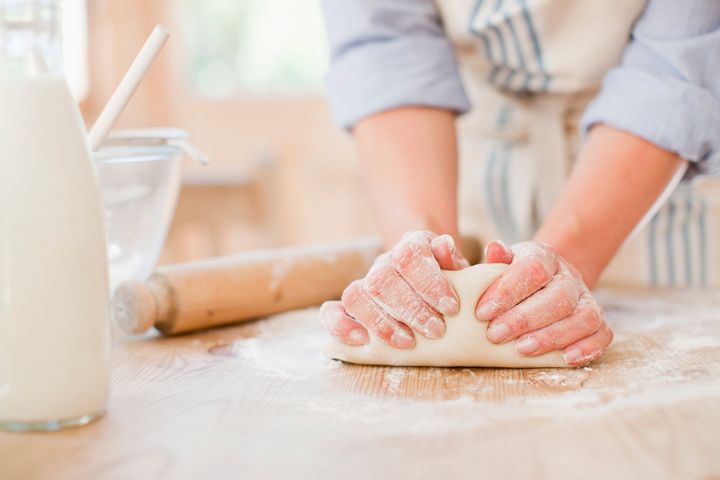
Since COVID-19 swept through the United States and the world, our collective mental health has languished. According to Centers for Disease Control and Prevention data, 2 in 5 Americans say they’re struggling with mental health concerns as a result of the pandemic. And research suggests that stay-at-home orders took a particular toll, with people experiencing greater anxiety and getting less restorative sleep.
Unfortunately, as COVID-19 cases hit historic highs, states are beginning to reinstate restrictions, and millions of Americans are being urged to once again hunker down. We may even see lockdowns again in some areas.
But new research suggests there may be an antidote to the emotional strain of pandemic fatigue: “flow.”
How ‘Flow’ Can Help With Lockdown Stress
Psychologist Mihaly Csikszentmihalyi first coined the concept of mental “flow” to refer to stretches of time when a person is completely focused on whatever they’re doing.
When you’re in a state of flow, you may lose track of time, you are active, and you may feel aware of yourself only in relation to the task at hand.
The new study on flow, published in the scientific journal PLOS One last week, included more than 5,000 individuals who were quarantined in China in the early months of the coronavirus pandemic. They answered online survey questions about how many times in the prior week they’d felt utterly absorbed by whatever they were doing, and to what extent they’d felt simultaneously stimulated and challenged — all elements of flow.
After analyzing the responses, researchers found that flow was linked to decreased loneliness and higher levels of positive emotion among people who were stuck at home during COVID-19.
And while generally, the longer people were under lockdown, the greater the negative emotional impact, people who experienced flow tended to fare better over time.
“No one can tell you what brings you flow; you have to discover and experience [it] yourself.”
- Claire Nicogossian, clinical psychologist and author
The findings are still fairly new and the researchers only established an association, not a cause-and-effect relationship, between flow and better mental health.
But outside experts agree that flow may be a powerful buffer against the emotional strain of COVID-19 stay-at-home orders.
“Flow is a brilliant skill and strategy to incorporate into an individual’s routine and life — especially now,” said Claire Nicogossian, a clinical psychologist and author of “Mama, You Are Enough: How to Create Calm, Joy and Confidence Within the Chaos of Motherhood.”
“You’re so engaged in something you enjoy, [that makes] you feel purposeful, connected, and sharing your gifts with others or learning something new or something you love, that you lose sense of time and experience the positive benefits from being engaged in this activity,” she added.
How To Cultivate Flow
So what puts a person in a state of flow? Experts tend to point to hobbies like playing music, knitting, cooking, gardening or doing something athletic such as playing a sport, going for a run or doing yoga. Some people find themselves in a flow state while doing their work.
But if you’re not, say, an avid yogi, or you hate to cook, that’s OK.
“There are individual differences in how we experience flow,” Nicogossian said. “And, no one can tell you what brings you flow; you have to discover and experience [it] yourself.”
If you’re stumped about what might help you cultivate mental flow, Nicogossian suggests thinking back to your childhood or teenage years. Ask yourself: “What were the activities you did when you were growing up or before life became focused on productivity and responsibilities when you experienced flow?”
(One note: Being totally immersed in a movie or TV show is not the same thing as being in a state of flow, because it’s not active. In general, experts say there’s a difference between pure leisure activities and more active, flow-inducing ones.)
If nothing springs to mind when you think back on old hobbies and interests, then maybe take this time to be “curious” about yourself, Nicogossian added. What do you daydream about? What do you think you might be drawn to? Now could be the time to give it a try.
The COVID-19 pandemic has been a wildly challenging time for millions of Americans, many of whom are balancing economic stress, illness, the loss of loved ones and unrelenting child care demands — all on top of social isolation. Finding small ways to tap into “flow” might just be one small way to push back against all of that stress as we head into what public health experts warn will be a long, hard winter. Time for more bread-baking, anyone?